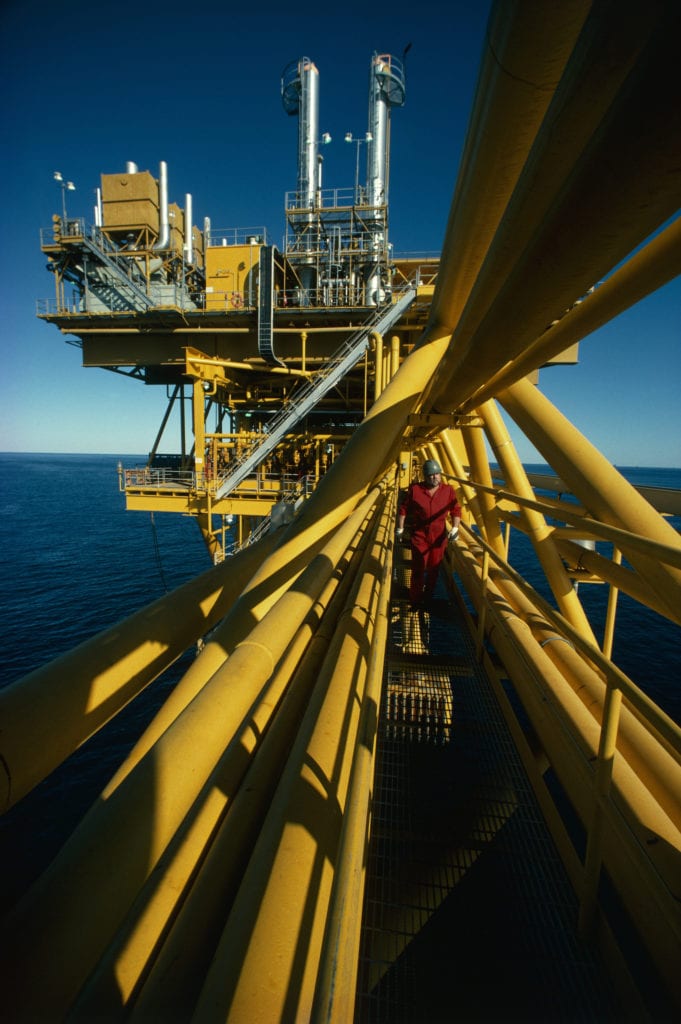
In early October, we announced our “NetZero Upstream Facility” partnership with McDermott and io Consulting with a concept study defining pathways to upstream carbon neutrality. The interest expressed by the industry has been tremendous, with all major players asking for details on the approach.
This echoes the commitments that were already taken by the industry:
- BP – Net zero across BP’s operations on an absolute basis by 2050 or sooner
- Equinor – to reduce net carbon intensity by at least 50% by 2050
- Shell – to become, by 2050 or sooner, a net-zero emissions energy business
- Total – Net Zero across worldwide operations by 2050 or sooner (scope 1 & 2)
Additional commitments have been taken recently in the industry:
- In September, the OGCI members have set a target to reduce by 2025 the collective average methane intensity of aggregated upstream oil and gas operations. This announcement comes as OGCI welcomes the addition of three US companies: Chevron Corporation, Exxon Mobil Corporation, and Occidental Petroleum.
- In October, ConocoPhilips set an ambition to reduce operational greenhouse gas (GHG) emissions to net-zero by 2050; they also revised target to reduce GHG emissions intensity by 35 to 45% by 2030 compared to previous target of 5 to 15%.
- In November, Petronas announced it aims to become a net zero emitter of greenhouse gases by 2050; that same month, Occidental Petroleum laid out a target to reduce greenhouse gas emissions at its operations to net zero by 2040.
- In December, Exxon said it would seek to reduce the greenhouse gas emissions of its upstream business by 15 to 20 percent from 2016 levels by 2025, as well as target a 40-45 percent reduction in methane intensity across its upstream projects by that year.
Despite the economic downturn and the low prices faced by the Oil & Gas industry, we have witnessed no reduction in spending by oil companies on “green” initiatives in the past 12 months. On the contrary, it looks like they are all ramping up expertise & organization to address the GHG emissions challenges. At the same time, we see new events and conferences popping up on the subject, and incumbent ones adding the sustainability key word to their usual topics.
We believe our approach to be original and innovative
We have identified some interesting approaches, related to electrification and decarbonization, for example:
- Concawe, the association of European refinery operators, have identified tracks to decarbonize refinery operations with a target of -25% emissions by 2030.
- the ‘Cracker of the Future’ consortium aims at electrifying crackers -of course with the intent to use electricity from renewables, and groups BASF, Borealis, Sabic, Total, BP and LyondellBasell
- the G2 Net Zero LNG project is a liquefaction plant project that will be associated to a CCUS process
- Adnoc, BASF, Adani and Borealis plan a CO2-neutral petrochemical plant in Mundra, India
We have also witnessed some initiatives to reduce or eliminate on-board personnel in offshore platforms and reduce the need for human interventions in refineries or petrochemical plants or onshore fields.
- For example, Shell has a Drone program to support its shale operations in North America and Argentina.
We have also seen many papers developing futuristic ideas, combining technologies that are today not mature or not at industrial scale… We appreciate these ideas, but they often need to be tagged with a label like “may be at scale in 10 years”.
However, we have identified no holistic offering with an ambition to decarbonize as much as possible an Upstream facility. And we believe no supplier alone can have such a holistic approach. During our joint work defining this NetZero Upstream facility concept, we have learned from each other and enriched initial value proposition. As an example, the concept of de-manning, that was initially CO2 impact from helicopter and supply-ship trips, impacted the dimension of the emergency power system and the definition of the flaring system. And de-manning should not only be understood as remote control, but also making sure that maintenance campaigns and field service engineer trips are planned long time ahead and reduced as much as possible. De-manning here meets predictive maintenance and the necessary analytics.
One of the most profound effects of the global pandemic has been to drive social distancing. This has accelerated interest in remote operations and de-manning oil, gas and petrochemical facilities. De-manning a plant has many benefits. It reduces the cost of infrastructure to support people working on the site. For offshore facilities, this may include elimination of temporary living quarters, safety systems, flares and the cost of the structural steel to support this equipment. These can add-up to significant savings. As many have said in the past, the safest plant is the one that is not running. Today there is a new axiom, the safest plant is the one where people don’t work on site. De-manning can significantly reduce safety risk exposure. Mining facilities in Australia and ethylene crackers in Siberia pose another challenge. The natural resources are remote from populations centers and may be harsh environments for people to work. This makes it difficult to acquire and retain talent needed to maintain asset utilization and availability where the return on investment is already challenging to justify.
We have explored the technologies required to reduce the risks of de-manning
Secure reliable communication to remote control rooms is essential. The distance could be thousands of kilometers. Communication must meet minimum bandwidth and maximum latency thresholds. Most modern control systems have high efficiency designs that reduce the amount of data between the two sites that don’t usually pose a problem. However, depending on the communication medium, latencies or lags can cause unacceptable delays when a remote operator has to respond to a process upset. The control system has to be designed to handle minor latencies, without creating network errors or controllability problems. Some satellite systems and non-dedicated internet lines can create unacceptable lags. Cyber security takes on an elevated role since the communication will go outside the plant gate where traffic and access can no longer be completely controlled and secured.
Equipment will require predictive analytics which provide advanced notice for maintenance crews to assemble from longer distances while reducing unplanned down-time. Equipment will have to be made more reliable by embedding new sensors that enable previously unavailable predictions. New analytics need to be created to understand how to get better trade-offs of more production vs longer equipment life.
Digital twins will be essential for remote assessment and root cause analysis of failures and shutdowns. They will enable tweaks of operating and maintenance procedures without traveling to the site. An operational digital twin will follow or shadow the operating plant enabling an operator to change a key control parameter and run multiple times faster than the control system running the plant. The operator could determine whether the change had the desired effect over a production shift or determine if there were other negative impacts not anticipated.
Specialists could practice and sharpen their skills across an entire fleet of a specific type of equipment like fired heaters, boilers, compressors or reactors. They might specialize in specific units like crude units or ethylene crackers. They could work away from units where safety risks are especially high like alkylation units that have highly corrosive hydrofluoric acid or MDI plants that have highly reactive phosgene.
Drones could be used for remote inspection; however, communication would have to be secure with even faster latencies. Communication bandwidths would have to be higher than what’s required for remote control systems since it requires far greater information for higher resolution video and higher screen refresh rates people have come to expect.
Additional instrumentation would be required to make-up for the loss of a local operator with eyes, ears and cognition. Instrumentation and control system input/output channels would be provided with higher levels of redundancy to increase overall mean time between failures. And finally, control and safety systems would employ designs that accommodate the redundancy of field instruments and provide diagnostics to alert maintenance planners before failing.
To find out more about this work and how the Net Zero Facilities team can transform the carbon footprint of your assets, please contact Eric Koenig at Schneider Electric (eric.koenig@se.com).
To find more about the concepts of de-manning, please contact David Gaertner at Schneider Electric (david.gaertner@se.com).


